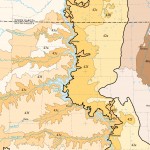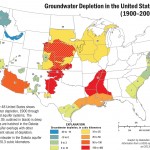by Susan Smith, Special to Dakotafire Media Populations of pollinating insects, such as monarch butterflies and bees, are considered a key indicator of overall environmental health. “They’re the canary in the coal mine,” said Peter Berthelsen during a presentation to students and landowners Sept. 9 at South Dakota State University. “We have to figure out how to make all things ... Read More »
Land
New S.D. Soil Health Coalition digging deeper into soil biology, sustainability
What’s the state of the soil throughout the Dakotafire region? “There’s no way to know,” according to officials, but “there’s always room for improvement.” South Dakota State University Extension and the South Dakota Soil Health Coalition have joined forces in a proactive attempt at ensuring the state’s soil is conducive to growing for the long haul, according to Sandy Smart, ... Read More »
Glyphosate resistant kochia challenges farmers
Kochia has been a weed of concern in South Dakota for almost a century. First introduced to the U.S. as an ornamental plant in 1900, kochia has had plenty of time to become an aggressive weed. Read More »
New herbicide-resistant crops may affect neighbors
Advocates of the new technology say the new crops provide a vital weapon in the war against weed resistance to glyphosate, which is becoming a stubborn and costly problem for farmers across the country. Unfortunately, stubborn weeds aren’t the only thing that 2,4-D kills, and gardeners, vineyard owners and even other farmers of commodities who don’t switch to the new technology could be affected if the 2,4-D drifts onto their fields. Read More »
Water flows across political boundaries, brings conflict with it
The 19th-century explorer John Wesley Powell envisioned developing the political boundaries of the arid American West based on watersheds. More than 120 years ago, he predicted the potential for fights over water. Powell’s watershed boundary vision did not come to pass, but the conflicts he envisioned did—including here in the Dakotas. Read More »
New Weather Station in Marshall County
via SDSU Extension BROOKINGS, S.D. — Thanks to a public-private partnership, Marshall County has a new weather station. The station, sponsored by Full Circle Ag of Britton, reports live weather and ag data. It will operate as a part of the statewide network of weather stations maintained by South Dakota State University. Joe Gustafson, Location Manager at Full Circle ... Read More »
REPORT: Heavy Snow, Rain Help Drought in S.D.
(NPN) – Though it was way too much of a good thing, recent snow and rains greatly improved South Dakota’s drought situation. According to the U.S. Drought Monitor, heavy and record setting precipitation fell this past week in the High Plains Region. In South Dakota, a blizzard set several snowfall records, including in Rapid City, which had a snowfall measurement of 23.1 inches over a two-day span. ... Read More »
Watershed taskforce agrees relief is needed in Day County
A Regional Watershed Advisory Task Force, a legislative committee charged with studying water management issues, held its third meeting in Webster last week where the message from landowners was relief from the ever rising sloughs and lakes. Read More »
Bee losses that threaten industry partly related to change in Dakota landscape
What is causing the significant increase in bee die-offs in the past decade? Recent research suggests there’s no single cause, instead pointing to several factors that combine or interact to weaken or kill bees. But according to an ongoing study in Stutsman County, N.D., at least one of those causes is tied to changes in the Dakota land where those bees buzz away their summers: The conversion of grassland to cropland is affecting bees’ diets, which makes them less healthy. Read More »
Groundwater levels are down in South Dakota
Groundwater depletion of the Ogalla aquifer has made headlines in recent years, but the Dakota aquifer has also gone down significantly since 1900, according to estimates by the U.S. Geological Survey. Read More »
 Dakotafire Get your spark here.
Dakotafire Get your spark here.








